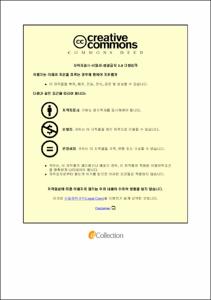병원 밖 심정지로 목표체온유지치료를 받은 ST 분절 상승이 없는 환자들에서 관상동맥조영술의 임상적 의의
- Abstract
- Background
Current international guidelines recommend that emergent coronary angiography (CAG) should be performed for all out-of-hospital cardiac arrest (OHCA) survivors with suspected cardiac etiology of arrest and with ST-segment elevation (STE) on a post-resuscitation electrocardiogram (ECG) in immediate post-cardiac arrest period. In contrast those with STE, the optimal strategy for those without STE remains in debate.
The objectives of this study were (1) to present the CAG findings of all the consecutive adult comatose OHCA survivors without STE who underwent CAG within 24 hours after return of spontaneous circulation (ROSC) and who were treated with targeted temperature management (TTM); (2) to evaluate the rate of 1-month good neurologic outcome and survival; and (3) to evaluate the impact of immediate CAG strategy (< 2 hours after ROSC) versus early CAG strategy (2 – 24 hours after ROSC) on the 1-month neurological performance and survival.
Method
This multicenter retrospective observational registry-based study was conducted at the Emergency Department (ED) of 8 tertiary care university-affiliated teaching hospitals in Korea. Data of adult non-traumatic OHCA patients with no obvious extra-cardiac cause, without STE, who were treated with TTM, and in whom CAG was performed within 24 hours after ROSC between 2010 and 2015 were extracted. Patients were categorized into the immediate (≤2 hours) and early (2–24 hours) CAG groups. To reduce the effect of treatment selection bias and potential confounding factors, patients were propensity score matched. The primary endpoint was 1-month good neurologic outcome, and the secondary endpoint was 1-month survival.
Results
Among 346 patients with TTM and CAG, 119 who underwent CAG after 24 hours were excluded, and 227 patients were finally included. The proportion of the patients who received CAG within 24 hours increased during the 6-year study period. A total of 97 (42.7%) patients had a coronary artery stenosis of at least 50% and subsequent percutaneous coronary intervention and intra-aortic balloon pump insertion was performed in 49 (21.6%) and 18 (7.9%) patients, respectively. Among the 227 included patients, 112 and 115 patients were categorized into the immediate and early CAG groups, respectively. The coronary artery disease extent and subsequent interventions after CAG did not differ between immediate and early CAG groups. In crude model, the patients in early CAG group showed better clinical outcomes including survival at 1 month (58.9% vs. 76.5%; P = 0.005) and good neurologic outcome at 1 month (31.3% vs. 50.4%; P = 0.003). However, after propensity matching, we found no significant difference in clinical outcomes between two groups. Consequently, the timing of CAG (immediate versus early CAG) was not associated with the survival (odds ratio, 1.600; 95% confidence interval, 0.726–3.526; P = 0.244) and good neurologic outcome at 1 month (odds ratio, 1.917; 95% confidence interval, 0.954–3.852; P = 0.068).
Conclusions
Coronary artery stenosis was found in 42.7% of OHCA survivors without STE who underwent CAG within 24 hours. In crude model, good neurologic outcome and survival at 1 month were higher in early CAG group compared to immediate CAG group, but there was no clear benefit of immediate versus early CAG after propensity score matching. Further randomized clinical trials are warranted to define the guidelines for recommending optimal CAG timing.
- Issued Date
- 2018
- Awarded Date
- 2019-02
- Type
- Dissertation
- Alternative Author(s)
- Youn-Jung Kim
- Affiliation
- 울산대학교
- Department
- 일반대학원 의학과
- Advisor
- 김원영
- Degree
- Doctor
- Publisher
- 울산대학교 일반대학원 의학과
- Language
- eng
- Rights
- 울산대학교 논문은 저작권에 의해 보호받습니다.
- Appears in Collections:
- Medicine > 2. Theses (Ph.D)
- 파일 목록
-
-
Download
 200000173641.pdf
기타 데이터 / 2.75 MB / Adobe PDF
200000173641.pdf
기타 데이터 / 2.75 MB / Adobe PDF
-
Items in Repository are protected by copyright, with all rights reserved, unless otherwise indicated.